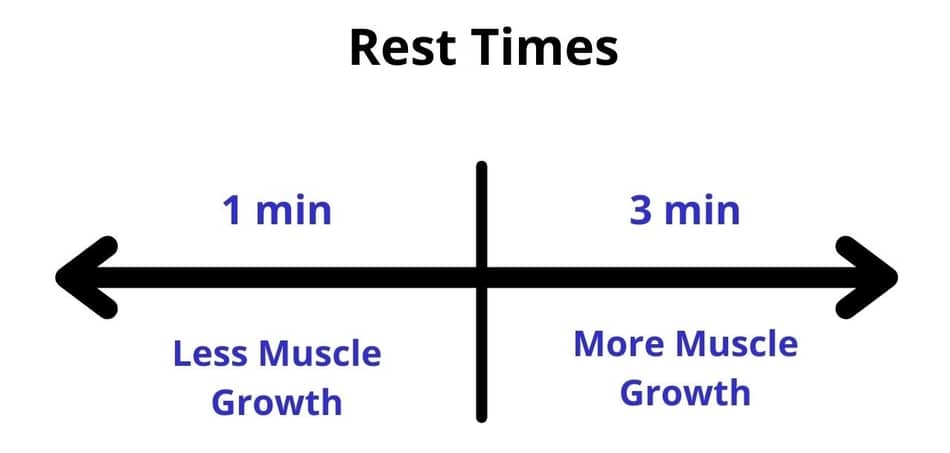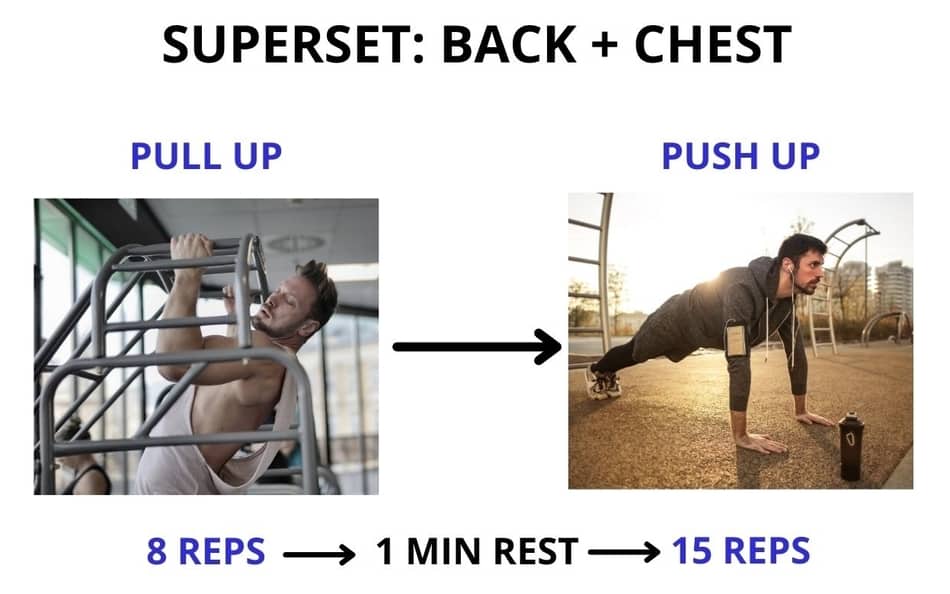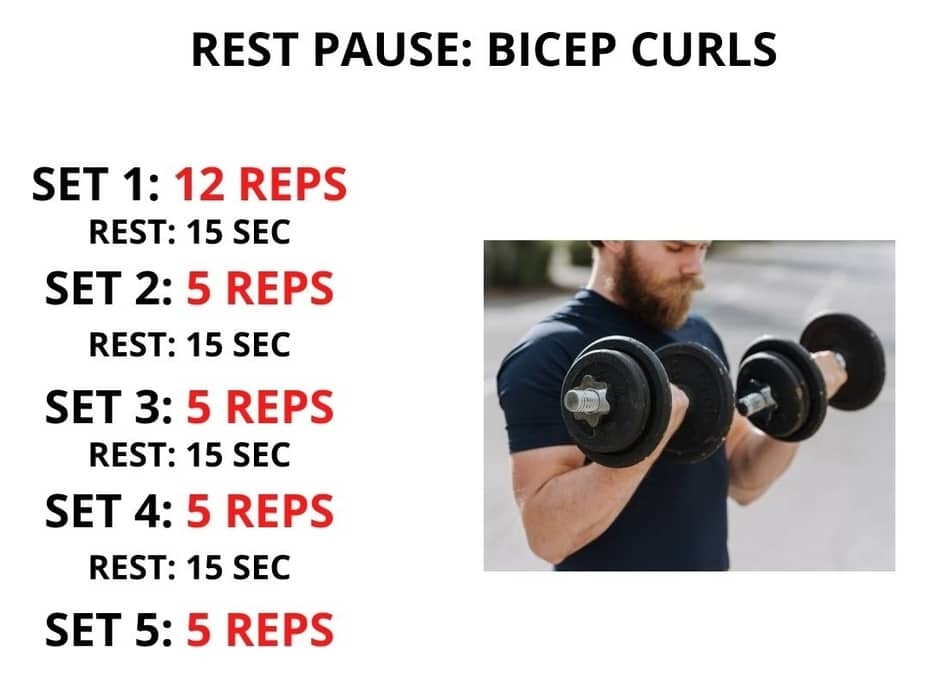
If you have ever worked out, you’ve probably wondered how long you should rest between your sets.
Should you take long rests so you are fully recovered?
Or should you take shorter rests so your muscles don’t have time to fully recover?
In this post, I will provide science-based information on how long you should be resting between your sets for muscle growth.
Research on Rest Periods
Research conducted just within the past several years provides information that can help us identify the optimal time to rest between sets in order to gain muscle.
Dr. Brad Schoenfeld recently conducted a study involving 21 resistance-trained men who were divided into two groups:
- Group one completed an 8 week resistance training program that included 1 minute rest periods between sets
- Group two completed the exact same resistance training program, but included 3 minute rest periods between sets
After both groups completed the same training program, the group that rested for 3 minutes instead of 1 minute saw greater increases in both muscle strength and hypertrophy (muscle growth), providing evidence that longer rest periods are likely superior to shorter rest periods.

Similar results were found the following year in a meta-analysis, showing that rest periods consisting of less than 60 seconds were inferior to rest periods above 60 seconds in regards to hypertrophy.
So Exactly How Long Should You Rest?
According to the studies mentioned above, longer rest periods seem to be more effective at promoting muscle growth than shorter rest periods, but what is the optimal rest time?
In short, it depends on the type of exercise you are doing.
In general I would follow this recommendation for resting between sets:
- Multi-joint exercises: 2-3 minutes
- Single-joint exercises: 1-2 minutes
The table below shows a list of common multi-joint and single-joint exercises:
| Single-joint exercises | Multi-joint exercises |
| Leg extensions | Squats |
| Leg curls | Deadlifts |
| Chest flyes | Bench press |
| Bicep curls | Pull ups |
| Tricep extensions | Barbell rows |
| Lateral raises | Overhead press |
Generally, the more difficult the exercise and the heavier the weight, the more you need to rest between sets. That is why multi-joint exercises require more rest – they fatigue your body more and target larger muscle groups so they require more time to recover.
While my above recommendation suggests to rest 2-3 minutes for compound exercises, not all of these types of exercises are equal. One example of how your rest time may differ between compound exercises is the seated cable row versus the pull up. These are both compound exercises that target the back muscles; however, given that seated cable rows are typically “less difficult,” they might require more like 2 minutes rest, whereas with a pull up, you might benefit from 3 minutes rest.
I also want to note that there is a place for longer than 3 minute rest periods. If you are doing heavy compound movements for strength, such as squats or deadlifts, in the 1-5 rep range, you might benefit from 3-5 minutes of rest between your sets. For example, in this study, participants performed best on heavy bench press with 3-5 minutes rest between sets.
How To Incorporate Rest Periods In Your Workout Routine
In order for you to see how you might incorporate rest periods into your workout routine, I am providing a sample upper body workout below.
Pull ups: 3 sets of 5-8 reps (3 min rest)
Incline DB bench press: 3 sets of 10 reps (2-3 min rest)
Cable rows: 3 sets of 12 reps (2 min rest)
Arnold (shoulder) press (1-2 min rest)
Bicep curls (1-2 min rest)
As you can see, rest time between sets tends to decrease as your workout progresses because you want to start each workout with the most difficult compound movements. As you progress through your workout, you will transition to less difficult compound movements (such as cable rows), which require even less rest than pull ups, followed by isolation exercises, such as bicep curls, which require the least amount of rest.
Why Is More Rest Superior?
Longer rest periods tend to be more effective for muscle growth because they allow you to complete more total training volume (sets x reps x weight) during your workout, which is a primary driver of hypertrophy.
If you rest longer, you will be able to perform more weight and repetitions compared to resting for a shorter period of time.
Take push ups, for example. If you perform 15 push ups and then rest 3 minutes, you will be able to do more reps the following set compared to resting for only 1 minute. As a result, you would be able to accumulate more total training volume with slightly longer rests.
Exceptions To How Long You Should Rest Between Sets
As with any rule, there are always exceptions to consider:
Supersets
Put simply, a superset is when you perform one set of a specific exercise, rest only 30 to 60 seconds, and then do another set of a different exercise.
I love implementing supersets for people who are doing full body workouts for the following reason.
If you are doing supersets that do not involve the same muscle group, you do not technically need to rest for as long of a period of time between each set.
For example, if you do a pull up and then perform a push up, you do not need to rest 2-3 minutes between these sets because while you perform the pull up, your chest, shoulders, and triceps, are “resting.” Likewise, when you perform the push up, your back and biceps are “resting.”

This is a great way to complete a full body workout in just 45-60 minutes because you can complete more exercises and target more muscle groups because you can take advantage of resting slightly less.
The one thing I would note is that super-setting heavy compound exercises, such as pull ups and bench press, can be quite taxing on your body even though they target different muscle groups. For this reason, I would not recommend going to failure on exercises during a superset if you are performing heavy compound exercises.
If you do, you will need to rest longer between sets so you can feel more recovered.
Rest-Pause Training
The next exception to the rule of how long you should rest between sets is related to “rest-pause training.”
Rest-pause training is a technique where you perform one set of higher repetitions to failure, followed by a short 10-20 second rest period. You then perform another set with the same weight for fewer repetitions to failure, rest 10-20 seconds, and repeat for several sets.

The idea behind this is that you are able to maintain high muscle unit recruitment, allowing for better hypertrophy gains.
One study compared rest-pause training to traditional training that included longer rests and found that both groups had similar results with muscular strength and hypertrophy.
That being said, there were confounding variables and it is likely that these benefits of rest-pause training were solely related to specific training principles, such as an increase in volume and intensity.
In my opinion, if you want to include occasional rest-pause training for fun on isolation exercises at the end of your workouts, such as lateral raises, tricep extensions, or bicep curls, then that’s totally fine. But I would not recommend this strategy for compound movements (bench press, squats, etc.) considering that you should focus on progressive overload and it also puts you at a higher risk for injury.
Burn More Fat
While it is true that resting less might result in slightly more calories burned during your workout, which may lead you to assume that you got a better workout, it is important to differentiate weight lifting from burning fat.
While weight lifting does contribute to calories burned, it should not be considered a primary driver of fat loss. After all, lifting weights for an hour only burns about 200 calories.
Instead, lifting weights should be understood as a means to becoming healthier and developing strength and muscle, while diet and cardio should be thought of as more direct ways to promote fat loss.
Changing It Up
Finally, another exception to the rule of how long you should rest between sets is about changing up your routine. Occasionally, throwing a fun activity into your workout routine is a nice way to keep things interesting. Giving yourself challenges every once in a while, such as seeing how many push ups you can do in 3 minutes (resting as little as possible), can be a fun way to finish off your workout.
Again, I would not recommend this as a primary way to promote muscle growth. Instead, for the most part, focus on resting enough between sets, especially on compound movements. This allows you to achieve progressive overload as you continue to get stronger each week.
Conclusion
After reading this article, you should now have a sense, based on the most current research, of how long to rest between sets in order to maximize muscle growth.
In general, you should rest roughly 2-3 minutes for compound movements (assuming your sets are intense) and 1-2 minutes for isolation exercises. That being said, there are exceptions to the rule. For example, if you are performing supersets that involve different muscle groups, you don’t need to rest as long.
However, for the most part, with the exception of some people, many could benefit from resting longer seeing as slightly longer rest periods tend to be more effective for muscle growth compared to minimal rest.
If you have any questions or comments, please leave them below and I will get back to you shortly!

